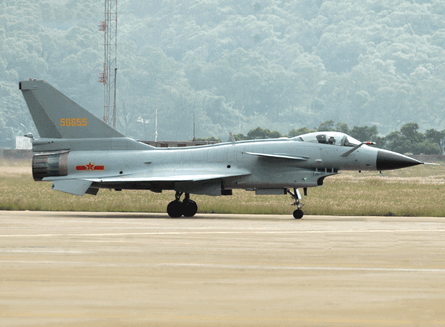China is likely to accelerate the modernisation of its fighter fleet over the next decade, and is looking to induct additional indigenous aircraft and order new types from Russia.
Beijing's Chengdu J-10 fighter was displayed publicly for the first time earlier this month at Airshow China 2008 in Zhuhai, where Chinese officials indicated that it would also develop new versions of the type. A B-model aircraft has already been proposed, with this to have a thrust-vectoring engine and an active electronically scanned array radar.
"The J-10 has been identified as the backbone of the Chinese air force. They will continue to increase the production rate and improve on the earlier version," says one observer. China has never revealed how many J-10s have entered service since 2006, but industry sources speculate that more than 100 have been produced from an eventual requirement for around 300.
 |
|---|
© Vladamir Karnozov |
A naval version of the J-10 is also on the cards, with sources saying that China hopes to get its aircraft carrier programme up and running in the next decade. But with an indigenous naval fighter expected to take too long to develop, China is reportedly negotiating with Russia's Rosoboronexport arms agency for an interim batch of 48 Sukhoi Su-33 fighters.
China has also shown interest in the Su-35, but could first place a significant order for Chengdu's FC-1/JF-17 fighter, which was jointly developed with Pakistan. Concurrently, Beijing is pursing several highly secretive studies to develop a stealthy fifth-generation fighter, and is also reportedly developing a stealth bomber, various unmanned air vehicles and indigenous powerplants.
Meanwhile, the air force's first cadre of eight pilots to graduate from the Chinese Flight Test Establishment finished their two-year course in mid-November, with each having received instruction on seven aircraft types and logged almost 1,000 sorties.
Source: Flight International























